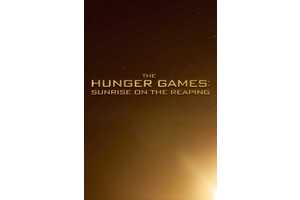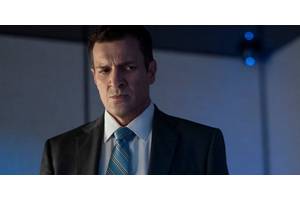If You Miss Creature Commandos, DC Has Some Great Heroes Who You'll Want to Meet
Creature Commandos, the first offering from James Gunn’s DC Studios, was a hit with critics and fans. The series, which followed the adventures of a rag-tag group of monstrous soldiers working under the thumb of Amanda Waller, not only introduced fans to a new cinematic DC Universe, but also a corner of the publisher’s output that rarely gets discussed these days: its large stable of war-themed characters.
While the Creature Commandos cartoon moved the team to the present day, the group has their roots in the past, namely the Second World War. This conflict, which spread to nearly every corner of the globe, provided compelling material for creators, many of whom served in the military as well. The Creature Commandos, and a bulk of DC’s military characters served in the Second World War, with a few outliers. Here are 10 of DC’s best military features if you happen to be missing Creature Commandos.
10 Balloon Buster Kept the Skies Safe During the First World War
Balloon Buster Was Grounded in a Real World Military Practice
Balloon Buster | |
First Appearance | Created By |
All-American Men of War #112 | Robert Kanigher & Russ Heath |
While many of DC’s best-known military characters served in World War 2, Balloon Buster in fact fought in the First World War. The “Balloon Buster” was in reality Steven Savage. Growing up in the American West, Savage enlisted in the Army Air Corps (a precursor to the modern day Air Force) when war broke out in Europe. He quickly became known for his marksmanship, downing many German observation balloons. Balloon Buster would have a rivalry with Enemy Ace (more on him later).
Balloon Buster was later revealed to be the son of DC Wild West character Scalphunter
Balloon busting was a very real tactic used in the First World War. When the War broke out, humanity had only been airborne for a little over a decade, but observation balloons had been used for many years prior. Enemy forces in World War One used these balloons, but soon a group of daring soldiers, called “balloon busters,” began destroying them. These balloon busters were the unsung heroes of World War One.
9 The Boy Commandos Were The Unlikely Heroes of World War 2
Springing From One of Comics' Best Partnerships, the Boy Commandos Were the Ultimate in Wish Fulfillment
The Boy Commandos | |
|---|---|
First Appearance | Created By |
Detective Comics #64 | Joe Simon & Jack Kirby |
The Boy Commandos, created by Joe Simon and Jack Kirby just a short while after striking gold with Captain America, represented wish fulfillment for many American children at the outbreak of World War 2. The Boy Commandos consisted of four children, orphaned by war, who rallied around an American GI Rip Carter, to fight the Nazis. At its core, the Boy Commandos were a dark feature: not only had these children lost their family to the war, they were being forced to continually confront its horrors as they fought back.
Simon and Kirby knew what they were doing when they created the Boy Commandos, and the team remains a highmark of their collaborations.
While such a concept most likely would not fly with modern audiences, the Boy Commandos were hugely popular in their day. According to legend, books featuring the team sold on the same levels as Superman and Batman’s titles. Simon and Kirby knew what they were doing when they created the Boy Commandos, and the team remains a highmark of their collaborations.
8 The Losers Did Not Live Up To Their Name
The Losers Were the Avengers of DC's War-Themed Characters
The Losers | |
|---|---|
First Appearance | Created By |
G.I. Combat #138 (as a team) | Robert Kanigher |
The Losers were a team of DC military-themed characters operating during the Second World War. The team’s members have already appeared in other war features published by DC, brought together as the Losers. The team enjoyed a healthy run in the Our Fighting Forces title. When Jack Kirby came to DC in the early 1970s, he took a stab at writing and drawing the Losers. While not as well known as his work on the Fourth World or The Demon, it still shows Kirby’s genius.
A Guide to Every Member of the Losers | ||
|---|---|---|
Name | First Appearance | Created By |
Captain William Storm | Capt. Storm #1 | Robert Kanigher & Irv Novick |
Johnny Cloud | All-American Men of War #82 | Robert Kanigher & Irv Novick |
Gunner | All-American Men of War #67 | Robert Kanigher & Jerry Grandenetti |
Ona Tornsen | Our Fighting Forces #135 | Robert Kanigher & John Severin |
Sarge | All-American Men of War #67 | Robert Kanigher & Jerry Grandenetti |
Pooch | Our Fighting Forces #49 | Robert Kanigher & Jerry Grandenetti |
After a decade’s worth of adventures, the Losers fought their final battle during the Crisis on Infinite Earths. Originally, they were killed by the Anti-Monitor’s Shadow Demons early in the event, but when the universe was put back together in the wake of the event, they were given a true hero’s death, sacrificing themselves to destroy a German superweapon.
The Losers was later revived in the 2000s as part of DC's Vertigo line, that would serve as the basis for the film of the same name.
7 The Unknown Soldier Was a Master of Disguise
The Unknown Soldier Has Been Remade Several Times
The Unknown Soldier | |
|---|---|
First Appearance | Created By |
Our Army at War #168 | Joe Kubert, Robert Kanigher & Irv Novick |
One of DC’s most popular military-themed characters, the Unknown Soldier, has starred in several definitive books over the years. Based on the “Tomb of the Unknown Soldier” in Washington DC, the character was an anonymous, horribly disfigured soldier who nevertheless continued the fight, serving on multiple fronts during the war. The Unknown Soldier was a master of disguise, and often used for missions behind enemy lines. Wrapped in bandages, the Unknown Soldier could be anybody, and this, along with his dark missions, made him a cult favorite.
Acclaimed writers Christopher Priest and Garth Ennis have taken cracks at the Unknown Soldier over the years, exploring the concept’s darker undertones.
The Unknown Soldier concept has proven too good to let go, and DC has reworked the character on a handful of occasions. Acclaimed writers Christopher Priest and Garth Ennis have taken cracks at the Unknown Soldier over the years, exploring the concept’s darker undertones. Writer Josuha Dysart took the Unknown Soldier in a completely new direction in 2008, transporting the character to Uganda. The series, although canceled, was praised for its realism, and was nominated for industry awards.
6 The First Incarnation of the Suicide Squad Were Rugged Fighting Men
The First Suicide Squad Has Direct Ties to the Modern-Day Version
The Suicide Squad | |
|---|---|
First Appearance | Created By |
The Brave and the Bold #25 | Robert Kanigher & Ross Andru |
First Appearance: The Brave and the Bold #25, Robert Kanigher, Ross Andru
While today the Suicide Squad is best known as a team of villains, the first incarnation of the team was originally one of DC’s war-themed features. The team, headed up by Rick Flag, operated in the Second World War. Much like their modern day counterparts, the original members of the first Suicide Squad (here also called “Task Force X”) were rough around the edges as well, and just like the team’s current missions, not everyone came back alive. John Ostrander would later revamp the team in the 1980s, shaping it into its current incarnation.
While the original Suicide Squad concept was rock-solid, it simply did not gain the traction that other features on this list did. Whereas others, such as the Unknown Soldier or the Losers, starred in many issues, the first Suicide Squad only got a handful of appearances. Yet the concept resonated enough through the ages for it to be revived, with some minor tweaking, time and again.
5 The Haunted Tank Was a Problematic, But Long-Lived Concept
DC Has Tried to Modernize the Haunted Tank, With Mixed Results
The Haunted Tank | |
|---|---|
First Appearance | Created By |
G.I. Combat #87 | Robert Kanigher & Russ Heath |
One of the most popular, if not problematic, of DC’s military-themed characters, the Haunted Tank successfully mixed gritty war action with a supernatural motif–which helped distinguish it from the many other such titles being published at the time. The feature chronicled the adventures of Army tank commander Jeb Stuart as he and his crew fought in the North African theater. Stuart and his crew were assisted by the ghost of JEB Stuart, who had fought for the Confederacy during the American Civil War.
While the concept was cool, using a Confederate general as a main character would not fly with today’s audiences, but this has not stopped DC from attempting to modernize the concept. In 2003’s The Power Company #16, fans meet Stuart’s granddaughter, Jessica, who also receives ghostly visions. A few years later, a Vertigo-inspired take on The Haunted Tank was published, featuring a Black tank commander.
4 Blackhawk Is One of the First, and Best, Military Themed Heroes
Despite Changing Publishers, Blackhawk Has Remained an Institution of War Comics
Blackhawks | |
|---|---|
First Appearance | Created By |
Military Comics #1 | Chuck Cuidera, Will Eisner & Bob Powell |
One of the most popular of DC’s military-themed features, the first and most famous incarnation of the Blackhawks team fought during the Second World War. Led by the mysterious “Blackhawk,” the team consisted of fighters whose territories had been conquered by the Axis. Delivering fiery vengeance upon the Nazis, the Blackhawks were one of the biggest selling titles of the Golden Age of Comics. The concept has been reworked several times in the modern era, most notably during the New 52, but none have had the staying power of the original.
Steven Spielberg was at one point attached to direct a Blackhawks movie.
It is ironic that the Blackhawk team is so closely considered with DC Comics, as the team actually began at another publisher: Quality Comics. In the mid-1950s, Quality decided to get out of the comics game, and sold their assets to DC. DC continued publishing Blackhawk, using the same numbering as Quality. Famously, the title did not skip a month of publication, despite changing hands.
3 Mademoiselle Marie Led the Resistance During World War 2
DC Has Given Mademoiselle Marie an Unlikely Legacy
Mademoiselle Marie | |
|---|---|
First Appearance | Created By |
Star-Spangled War Stories #84 | Robert Kanigher & Jerry Grandenetti |
Mademoiselle Marie, one of the few women war characters at DC, is grounded in real world history. During the Second World War, the Nazis occupied France, leading to the creation of an underground resistance movement. When Marie was first introduced, she was not given much in the way of a backstory, other than joining the Resistance. Mademoiselle Marie fought bravely during the War, and encountered other DC military characters, such as Sgt. Rock–more on him later.
In the current DC Universe, Mademoiselle Marie now refers to a title given to women agents of the DGSE, the French equivalent of the CIA.
In the current DC Universe, Mademoiselle Marie now refers to a title given to women agents of the DGSE, the French equivalent of the CIA. The Maries of today are assassins and intelligence agents, working to keep the country safe. The legacy of the name was later revealed to stretch back even further, to before the Second World War.
2 Enemy Ace Was the "Bad Guy"--Or Was He?
Enemy Ace Told World War One--From the German Perspective
Enemy Ace | |
|---|---|
First Appearance | Created By |
Our Army at War #151 | Robert Kanigher & Joe Kubert |
Of all of DC’s military-themed characters, Enemy Ace is the most unique. Unlike others in this stable, Enemy Ace fought for the “bad guys,” in this case, Germany during the First World War. Despite the startling premise, Enemy Ace would quickly become one of DC’s most popular war-inspired features. Enemy Ace’s stories, particularly those under his creators, are dark, even for a war comic. Even though Enemy Ace was a “bad guy,” he was depicted as being highly honorable, which helped readers identify with a German flying ace.
War in Heaven saw Enemy Ace initially fight for the Germans in World War Two, but quickly became disillusioned with the Nazis.
Since the original Enemy Ace feature ceased publication, the character has been revived on several occasions. Some of these revivals, such as 2001’s Enemy Ace: War in Heaven, by Garth Ennis, Chris Weston and Russ Heath, have tried to square the character with the rise of Nazism in the years following the First World War. War in Heaven saw Enemy Ace initially fight for the Germans in World War Two, but quickly became disillusioned with the Nazis.
1 Sgt Rock Remains the Best War-Themed Character
Sgt Rock Has Become a Legend in the DC Universe
Sgt Rock | |
|---|---|
First Appearance | Created By |
Our Army at War #83 | Robert Kanigher & Joe Kubert |
Arguably DC’s most well-known military character, Sgt. Rock has set the gold standard for war-themed characters in not only DC, but comics as a whole. Sgt. Rock, alongside his friends in Easy Company, fought in the European theater during World War Two. Like many other DC war comics penned by Robert Kanigher, the emphasis was not on the glories of war, but instead on the horrors, and Sgt. Rock displayed this in spades.
Stories abound in the DC Universe over what happened to Sgt. Rock after the war. Some accounts say he was killed on the war’s last day, while others have him returning to the States, and even serving in Lex Luthor’s administration during the 2000s. Rock’s co-creator Kanigher maintained that Rock not only died on the war’s final day, but was killed by the last bullet fired as well. These qualities have given Sgt Rock an almost mythical nature in the DC Universe, and is perfect for fans missing Creature Commandos.






